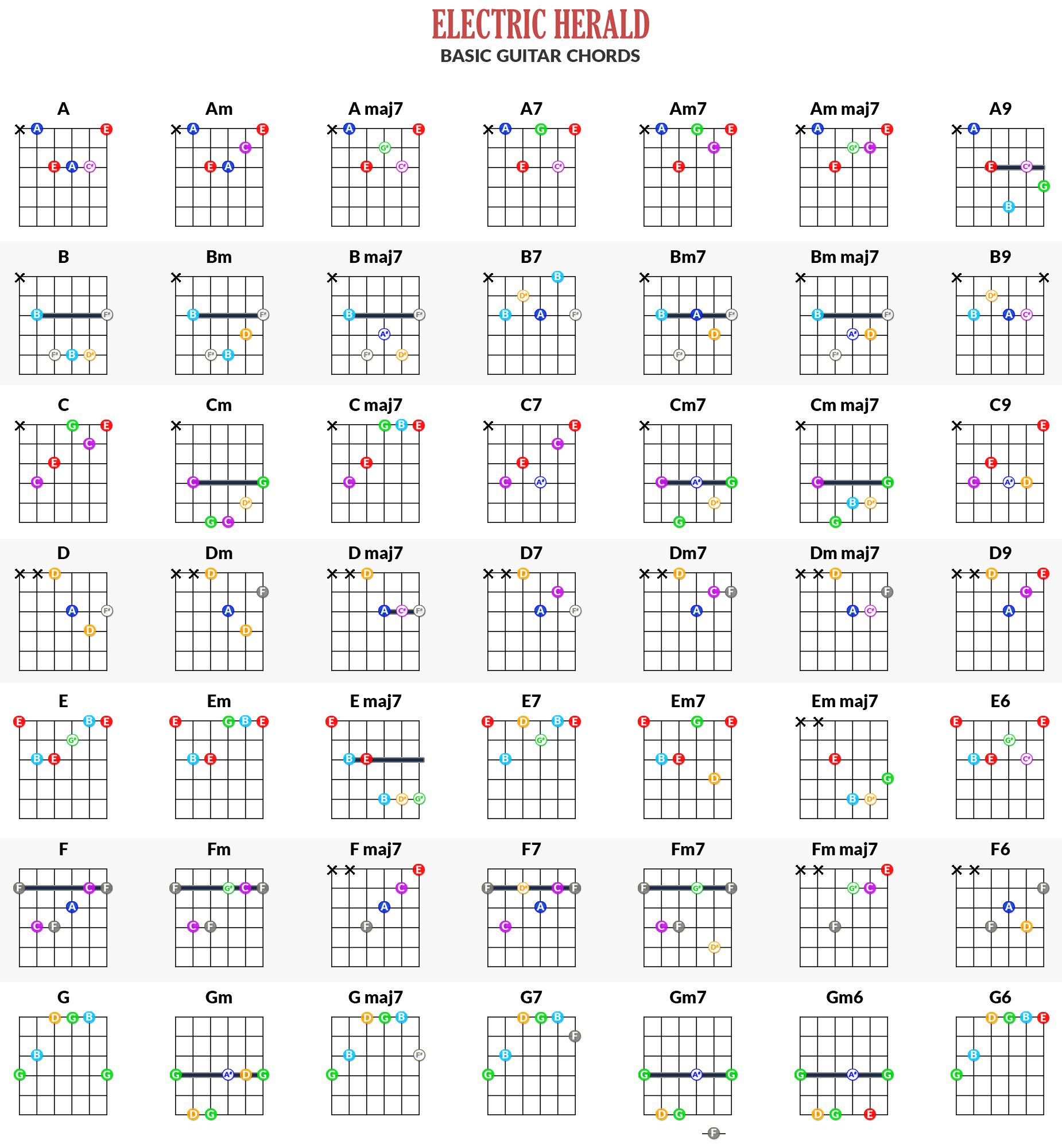
Thus, C Major being the main note – was a mere coincidence.Īnother part of the answer is that the C Major scale on the piano is the easiest to teach a new piano student because it contains no flats or sharps like what’s shown down in the image here.
#ALL CHORDS GUITAR CHART CODE#
Use the coupon code “producersociety”.Įssentially, the concept of a major key came long after we developed names for the notes. If you’re really serious about learning though, Punkademic’s Music Theory Comprehensive Complete Course is dirt cheap, and you can access the entire thing with their All-Access Pass. To understand more about this, you might want to refer to the complex story of the development of music theory.įor the long answer, you can check out this informative, yet fairly complicated video by MusicCorner on Youtube. Moving on though, there are reasons beyond just guitar that have made the C Major scale the predominant scale in music. Additionally, a big part of its popularity, I imagine, has to do with the fact many people are just used to hearing it by this point. These chords, when played together, likely have a combination of intervals that are very easy and pleasant for the person to listen to. In my view, the progression is so popular because it contains all of the major chords of a regular major scale, including the relative minor as well, which is the “iv.”

There’s probably an explanation for this but it’s a possibility that it’s largely subjective. Much to Rick Beato’s chagrin, the I – V – vi – IV progression, starting on C Major in many cases, is considered to be among the most popular, and best-sounding chord progressions. Some of the most popular modern and historic songs played in the C Major key are: Imagine by John Lennon, Stay by Rihanna featuring Mikky Ekko, and Someone Like You By Adele. Likely one of the first chords that any guitarist or pianist will learn, C Major is comprised of the notes C, E, and G. The C Major Chord – the most basic, but also the most important, guitar chord The reason for that is simple and it’s something I’ve discussed countless times before, including in this article on my other site, Producer Society.Įssentially, the C Major scale is the foundation of western music theory in the sense that it is the frame of reference by which every other scale is compared and contrasted. If you’re familiar with music theory, you might notice that all the chords listed below are in the key of C Major. 3) Some People May Say Other Chords Are More Important.2) There Are Many Inversions, Extensions, and Alternatives.1) Learning Piano Can Unlock Your Understanding Of Guitar Chords.Important Things to Note About Guitar Chords.Other Articles You May Be Interested In.Besides that, some chords are extended with sixths, sevenths, ninths and so on. The third note is a so-called perfect fifth. Further on, the major chords include a major third whereas the minor chords include a minor third as the second note in the chord. The relationship among chordsĪll chords are constructed with a C root note. An anomaly is the Cm6, which actually has a major 6th interval, which not is part of the C minor scale. You can see that Cm7 includes a Bb and Cm9 includes a D. Dominant chords are not tonal in the way that C7 and C9 doesn't include a B, but a Bb (B flat). By adding more chord categories, the degrees would tell that both Csus4 and C11 includes an F, but on different octaves. With the help of this reference, you can see that C6 includes a A and C9 includes a D.



The notes in relationship to numbersĬoncerning C chords, the numbers used in names are based on the position in the C major and minor scales. For pdf, see The Chord Reference ebook with over 800 chord charts.


 0 kommentar(er)
0 kommentar(er)
